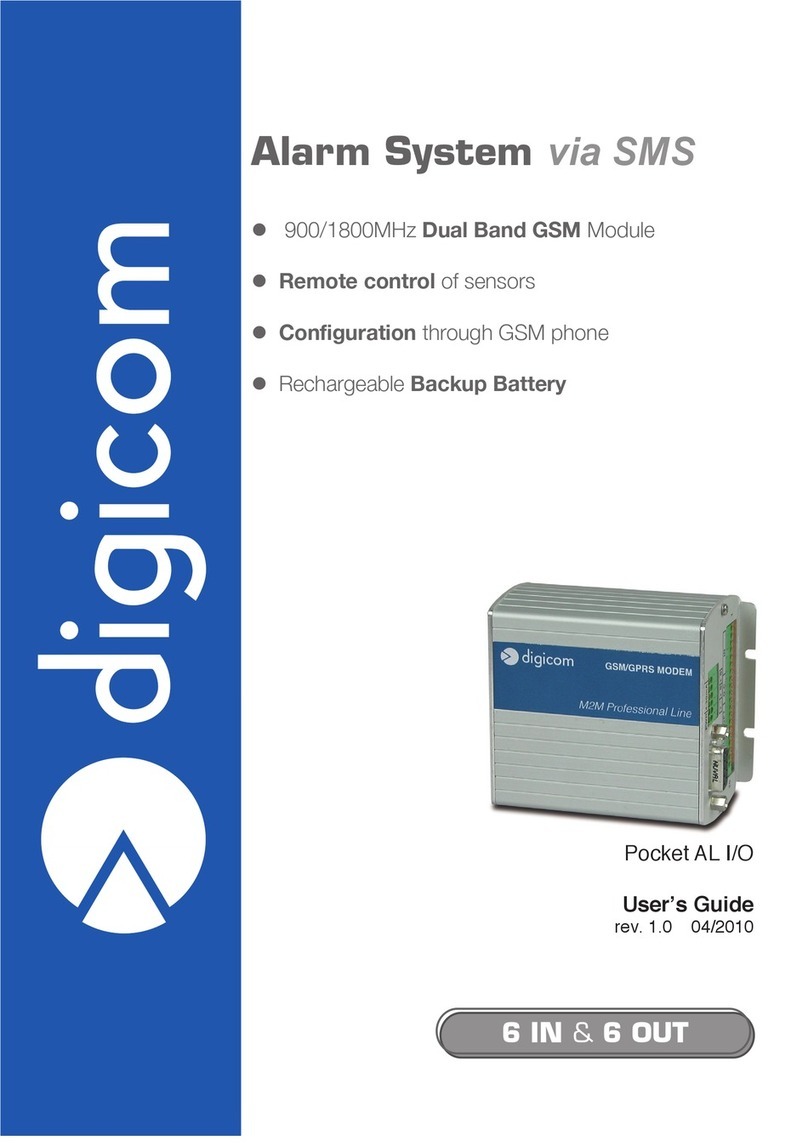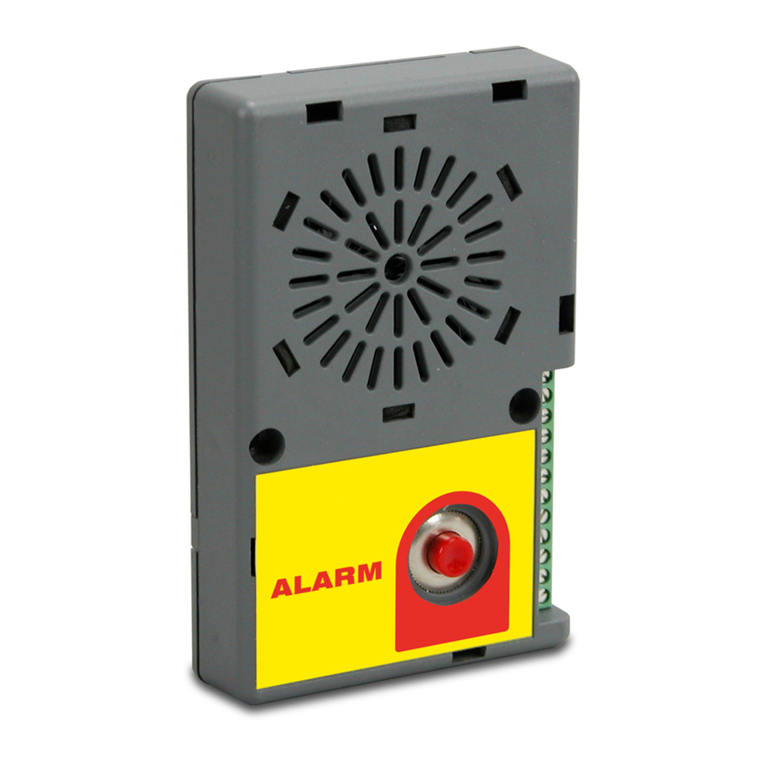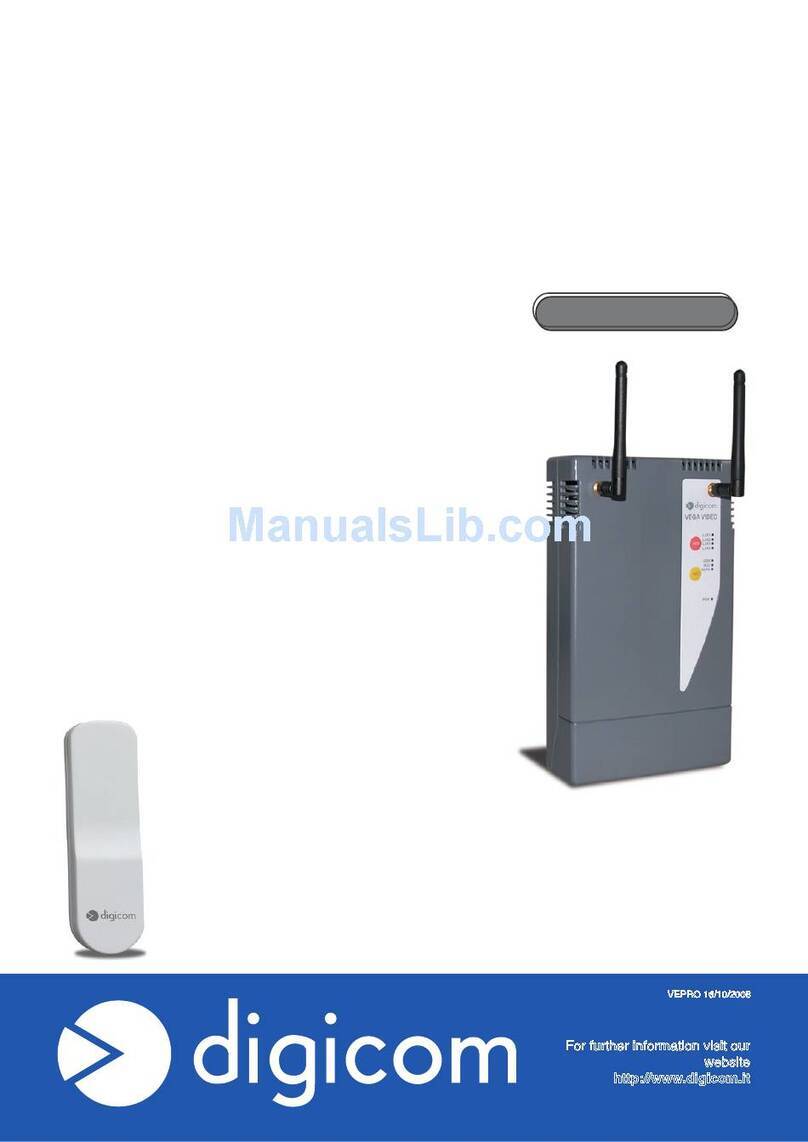
7
Alarm Input Characteristics
Permitted States
- Input Open
- Input Closed to Ground (0volt)
(with the input closed the maximum leakage current is
approx 1mA)
The maximum resistance between input
and ground 8 KΩ
Voltage Maximum Permitted +15 Vdc
Voltage Minimum Permitted -0,5 Vdc
Control Output Characteristics
Output 1 Dry Contact Normally Open
Max Current 3 A
2.1.2 Connecting the external antenna
After connecting the alarm inputs and if required the control output cabling the supplied
stub antenna can be fitted carefully positioning it and turning the SMA connector in a
clockwise direction.. In case of difficulty do not force it but ensure correct alignment.
Attention.
Best transmission and reception results are attained through placing the unit and its
antenna in a vertical direction and ensuring that no enclosure is shielding the radio
operation. In the event that the Archimede is installed in an enclosure or panel which
affects operation the use of a external antenna is recommended. Digicom Part no 8D4272
3.2 Metre External Antenna or 8E4150 0.8 Metre External Antenna can be supplied on
request.
2.1.3 Inserting the Subscriber Information Module (SIM)
The Archimede SMS functions using the Short Message Service (SMS) offered by most
mobile telephone operators. It is advisable to check with the supplier of your SIM that it is
enabled for SMS service. Some operators also offer EMS (Extended Message Service)
but this is not required for the Archimede SMS.
The SIM is a delicate item and should be handled with care never touching the gold
contact side as this can be damaged and cause faulty operation.
It is good practice to insert the new SIM into a normal telephone first to check functionality
and to disable the request for a PIN (Personal Identification Code) every time to SIM is
powered up.
A test SMS message should also be send to confirm the service is enabled and in the
case of prepaid SIM that sufficient credit airtime remains.
Ensure the Archimede is powered OFF
The SIM holder of the Archimede can be removed from the unit by pressing the latch with
a pencil or pen and carefully pulling out.
The SIM should be inserted into the holder ensuring the contacts are facing upwards and
that the bevelled edge opdf the SIM fits in the correct position.
Carefully insert the SIM holder into the Archimede and push gently until it is completely
home.






























